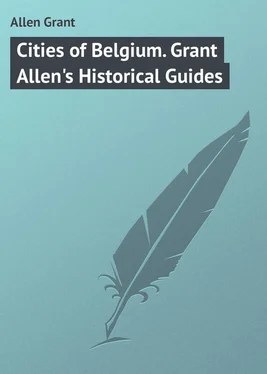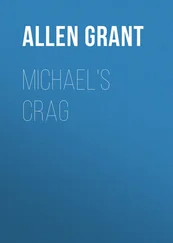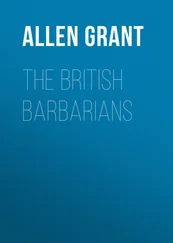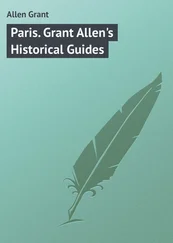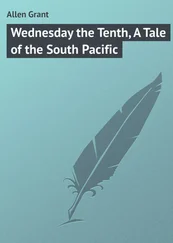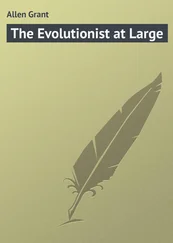Grant Allen - Cities of Belgium. Grant Allen's Historical Guides
Здесь есть возможность читать онлайн «Grant Allen - Cities of Belgium. Grant Allen's Historical Guides» — ознакомительный отрывок электронной книги совершенно бесплатно, а после прочтения отрывка купить полную версию. В некоторых случаях можно слушать аудио, скачать через торрент в формате fb2 и присутствует краткое содержание. ISBN: , Издательство: Иностранный паблик, Жанр: foreign_language, foreign_prose, на английском языке. Описание произведения, (предисловие) а так же отзывы посетителей доступны на портале библиотеки ЛибКат.
- Название:Cities of Belgium. Grant Allen's Historical Guides
- Автор:
- Издательство:Иностранный паблик
- Жанр:
- Год:неизвестен
- ISBN:http://www.gutenberg.org/ebooks/49690
- Рейтинг книги:3 / 5. Голосов: 1
-
Избранное:Добавить в избранное
- Отзывы:
-
Ваша оценка:
- 60
- 1
- 2
- 3
- 4
- 5
Cities of Belgium. Grant Allen's Historical Guides: краткое содержание, описание и аннотация
Предлагаем к чтению аннотацию, описание, краткое содержание или предисловие (зависит от того, что написал сам автор книги «Cities of Belgium. Grant Allen's Historical Guides»). Если вы не нашли необходимую информацию о книге — напишите в комментариях, мы постараемся отыскать её.
Cities of Belgium. Grant Allen's Historical Guides — читать онлайн ознакомительный отрывок
Ниже представлен текст книги, разбитый по страницам. Система сохранения места последней прочитанной страницы, позволяет с удобством читать онлайн бесплатно книгу «Cities of Belgium. Grant Allen's Historical Guides», без необходимости каждый раз заново искать на чём Вы остановились. Поставьте закладку, и сможете в любой момент перейти на страницу, на которой закончили чтение.
Интервал:
Закладка:
Expect the frequent recurrence of the following symbolson houses or pictures: (1) the Lion of Flanders, heraldic or otherwise, crowned, and bearing a collar with a pendant cross; (2) the Bear of Bruges; (3) the Golden Fleece ( Toison d’or ), the device of the Order founded by Philippe le Bon in 1430, and appropriate to a country which owed its wealth to wool; it consists of a sheep’s skin suspended from a collar. The Flemish emblem of the Swan is also common as a relief or decoration.
St. Donatian, Archbishop of Rheims, is the patron saint. His mark is a wheel with five lighted candles.
B. THE HEART OF THE CITY
[The original nucleus of Brugesis formed by the Bourg, which stands near the centre of the modern city. In 865, Baldwin Bras-de-Fer, Count of Flanders, built a château or burg by the Reye, in a corner of land still marked by the modern canal of the Dyver, and near it a chapel, into which he transported the relics of St. Donatian. This burg grew in time into the chief palace of the Counts of Flanders, now replaced by the Palais de Justice; while the chapel by its side developed into the first cathedral of Bruges, St. Donatian, now wholly demolished. A bridge hard by crossed the little river Reye; and from this bridge the town ultimately derives its name. The burg was built as a tête-du-pont to protect the passage. A town of traders gradually sprang up under the protection of the castle, and developed at last into the great trading port of Bruges. To this centre, then, we will first direct ourselves.]
Go from your hotel, down the Rue St. Amand, or the Rue St. Jacques, to the Grand’ Placeor market-place of Bruges, noticing on your way the numerous handsome old houses, with high-pitched roofs and gable-ends arranged like steps, mostly of the 16th and 17th centuries. (Bruges is a Flemish-speaking town: note the true names of the streets in Flemish.)
The very tall square tower which faces you as you enter the Grand’ Place is the *Belfry, the centre and visible embodiment of the town of Bruges. The Grand' Place itself was the forum and meeting-place of the soldier-citizens, who were called to arms by the chimes in the Belfry. The centre of the Place is therefore appropriately occupied by a colossal statue group(modern) of Pieter de Coninck and Jan Breidel, the leaders of the citizens of Bruges at the Battle of the Spurs before the walls of Courtrai in 1302, a conflict which secured the freedom of Flanders from the interference of the Kings of France. The group is by Devigne. The reliefs on the pedestal represent scenes from the battle and its antecedents.
The majestic Belfryitself represents the first beginnings of freedom in Bruges. Leave to erect such a bell-tower, both as a mark of independence and to summon the citizens to arms, was one of the first privileges which every Teutonic trading town desired to wring from its feudal lord. This (brick) tower, the pledge of municipal rights, was begun in 1291 (to replace an earlier one of wood), and finished about a hundred years later, the octagon (in stone) at the summit (which holds the bells) having been erected in 1393-96. It consists of three stories, the two lower of which are square and flanked by balconies with turrets; the windows below are of the simple Early Gothic style, but show a later type of architecture in the octagon. The niche in the centre contains the Virgin and Child (restored, after being destroyed by the French revolutionists). Below it on either side are smaller figures holding escutcheons. From the balcony between these last, the laws and the rescripts of the Counts were read aloud to the people assembled in the square.
The Belfry can be ascendedby steps. Apply to the concierge ; 25 c. per person. Owing to the force of the wind, it leans slightly to the S.E. The *viewfrom the top is very extensive and striking; it embraces the greater part of the Plain of Flanders, with its towns and villages: the country, though quite flat, looks beautiful when thus seen. In early times, however, the look-out from the summit was of practical use for purposes of observation, military or maritime. It commanded the river, the Zwin, and the sea approach by Sluys and Damme; the course of the various canals; and the roads to Ghent, Antwerp, Tournai, and Courtrai. The Belfry contains a famous set of chimes, the mechanism of which may be inspected by the visitor. He will have frequent opportunities of hearing the beautiful and mellow carillon, perhaps to excess. The existing bells date only from 1680: the mechanism from 1784.
The square building on either side of the Belfry, known as Les Halles, was erected in or about 1248, and is a fine but sombre specimen of Early Gothic civic architecture. The wing to the left was originally the Cloth Hall, for the display and sale of the woollen manufactures of Ghent and Bruges. It is now used as municipal offices. A door to the L. gives access to a small Museum of Antiquities on the ground floor, which may be safely neglected by all save specialist archæologists. (Admission 50 c.) The wing to the right is the meat market.
Now, stand with your back to the Belfry to survey the Square. The brick building on your right is the Post Office (modern); the stone one beyond it (also modern) is the Palace of the Provincial Government of Flanders. Both have been erected in a style suitable to the town. In the Middle Ages, ships could come up to this part of the Grand’ Place to discharge their cargo. The quaint houses that face you, with high-pitched gable-ends, are partly modern, but mostly old, though restored. On the left (W.) side of the Place, at the corner of the Rue St. Amand, stands the square castle-like building known as Au Lion de Flandre and marked by its gold lion. It is one of the best brick mediæval buildings in Bruges. According to a doubtful tradition, it was occupied by Charles II. of England during his exile, when he was created by the Brugeois King of the Crossbowmen of St. Sebastian (see later). In the house beside it, known as the Craenenburg, the citizens of Bruges imprisoned Maximilian, King of the Romans, from the 5th to the 17th of February, 1488, because he would not grant the care of his son Philip, heir to the crown of the Netherlands, to the King of France. They only released him after he had sworn before an altar erected at the spot, on the Host, the true Cross, and the Relics of St. Donatian, to renounce his claim to the guardianship of his son, and to grant a general amnesty. However, he was treacherously released from his oath by a congress of Princes convened a little later by his father, the Emperor Frederic IV.
From the corner of the Post Office, take the short Rue Breydel to the Place du Bourg, the still more intimate centre and focus of the early life of Bruges. This Place contained the old Palace of the Counts of Flanders, and the original Cathedral, both now destroyed, as well as the Town Hall and other important buildings still preserved for us.
The tallest of the three handsome edifices on the S. side of the Square (profusely adorned with sculpture) is the **Hôtel de Ville, a beautiful gem of Middle Gothic architecture, begun about 1376, and finished about 1387. This is one of the finest pieces of civic architecture in Belgium. The façade , though over-restored, and the six beautiful turrets and chimneys, are in the main of the original design. The sculpture in the niches, destroyed during the French Revolution, has been only tolerably replaced by modern Belgian sculptors in our own day. The lower tier contains the Annunciation, R. and L. of the doorway, with figures of various saints and prophets. In the tiers above this are statues of the Counts of Flanders of various ages. The reliefs just below the windows of the first floor represent episodes from Biblical history: – David before Saul, David dancing before the Ark, the Judgment of Solomon, the Building of Solomon’s Temple, and other scenes which the visitor can easily identify. The Great Hall in the interior is interesting only for its fine pendant Gothic wooden roof.
Читать дальшеИнтервал:
Закладка:
Похожие книги на «Cities of Belgium. Grant Allen's Historical Guides»
Представляем Вашему вниманию похожие книги на «Cities of Belgium. Grant Allen's Historical Guides» списком для выбора. Мы отобрали схожую по названию и смыслу литературу в надежде предоставить читателям больше вариантов отыскать новые, интересные, ещё непрочитанные произведения.
Обсуждение, отзывы о книге «Cities of Belgium. Grant Allen's Historical Guides» и просто собственные мнения читателей. Оставьте ваши комментарии, напишите, что Вы думаете о произведении, его смысле или главных героях. Укажите что конкретно понравилось, а что нет, и почему Вы так считаете.
